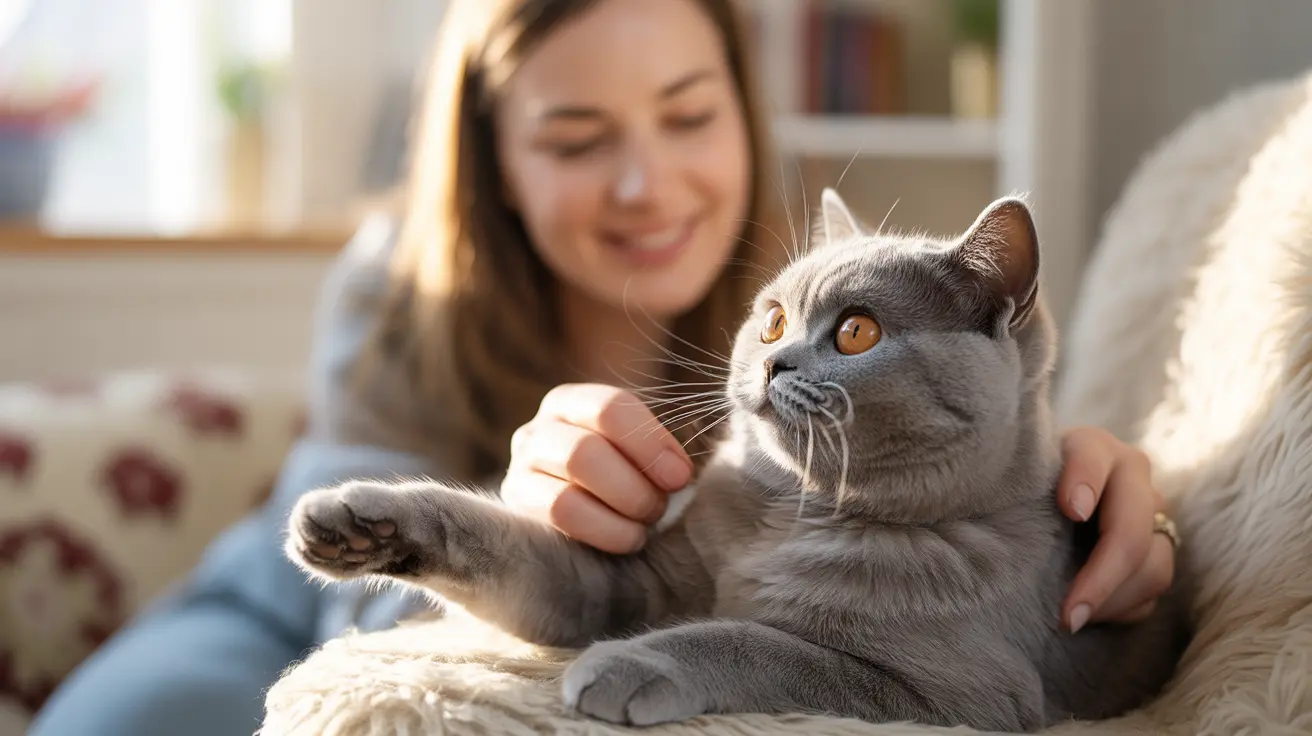The Science Behind Claw Extension During Petting
When cats extend their claws during petting, they're engaging in a behavior that has deep evolutionary and biological roots. This instinctive response involves both physical and emotional components that have been refined through thousands of years of feline evolution.
Signs of Contentment and Trust
When your cat extends their claws while being petted, it's often a sign of deep relaxation and trust. This behavior is typically accompanied by other positive body language signals such as purring, slow blinking, and a relaxed posture. It's your cat's way of saying they feel safe and comfortable in your presence.
The Connection to Kitten Behavior
Many adult cats extend their claws during petting as part of a broader kneading behavior, often called "making biscuits." This action is directly linked to their earliest days as kittens when they would knead their mother's belly to stimulate milk production. When your adult cat displays this behavior, they're reverting to this comforting childhood memory.
Territory Marking and Bonding
Cats have scent glands in their paw pads, and extending their claws during petting sessions can serve as a way to mark you as their territory. This isn't aggressive behavior - rather, it's a sign of affection and possession, showing that they consider you part of their family group.
Managing Claw Extension During Petting
While claw extension is natural and often positive, it's important to establish boundaries to prevent accidental scratches. Regular nail trimming, providing appropriate scratching posts, and using thick blankets during petting sessions can help manage this behavior effectively.
Reading Your Cat's Body Language
Understanding the difference between comfortable claw extension and signs of overstimulation is crucial. Watch for warning signs like tail twitching, skin rippling, or ears flattening, which might indicate your cat is becoming overwhelmed and needs a break from petting.
Frequently Asked Questions
Why does my cat extend her claws when I pet her but doesn't scratch me?
This is typically a sign of contentment and trust. Your cat is displaying comfortable behavior while maintaining control over their claws, showing they have no intention to harm you.
Is it normal for cats to extend claws while kneading during petting?
Yes, this is entirely normal behavior. Kneading with extended claws is an instinctive action that dates back to kittenhood and indicates comfort and contentment.
How can I tell if my cat's claw extension during petting means affection or irritation?
Look at other body language cues: purring, relaxed posture, and slow blinking indicate affection, while tail twitching, skin rippling, or flattened ears suggest irritation.
What does it mean when a cat extends claws to mark territory while being petted?
This behavior is a natural way for cats to mark their territory and show ownership through the scent glands in their paws. It's a sign of bonding and claiming you as part of their family group.
How should I manage my cat's claw extension during petting to avoid scratches?
Regular nail trimming, providing scratching posts, and using thick blankets during petting sessions can help prevent accidental scratches. Also, learn to recognize signs of overstimulation and respect your cat's boundaries.
Conclusion
Claw extension during petting is a complex behavior that typically signals trust, contentment, and affection from your cat. By understanding the various reasons behind this natural behavior and learning to read your cat's body language, you can better appreciate these moments of connection with your feline companion while maintaining safe and enjoyable petting sessions.






